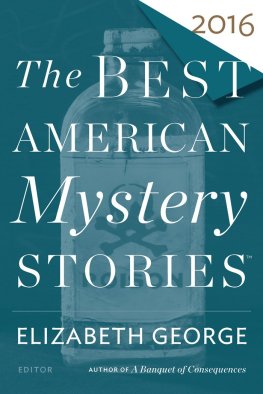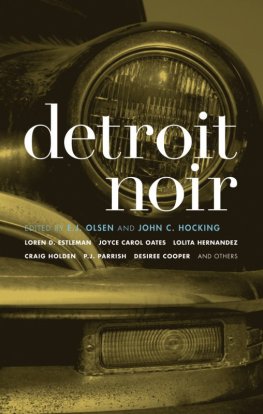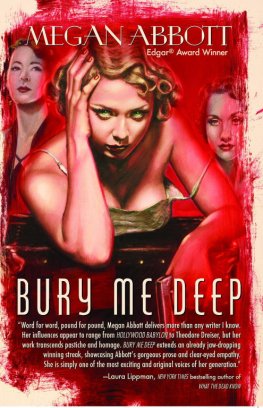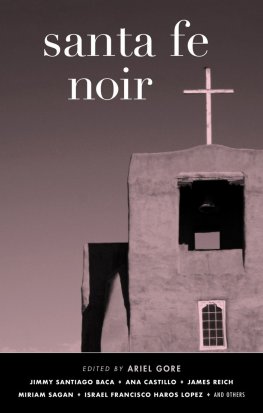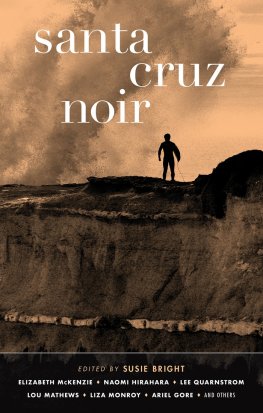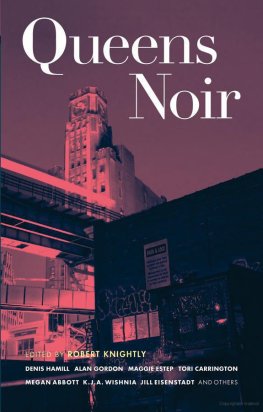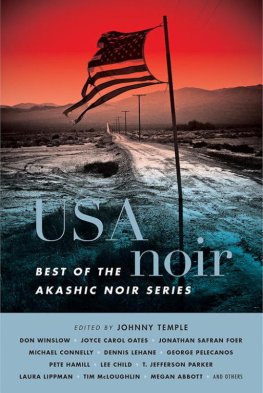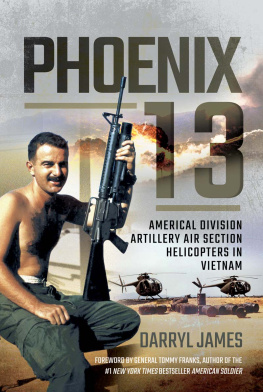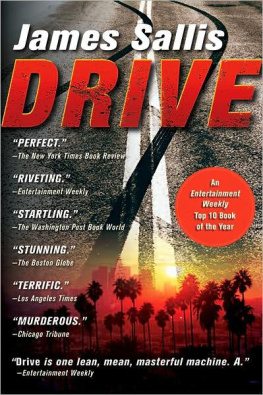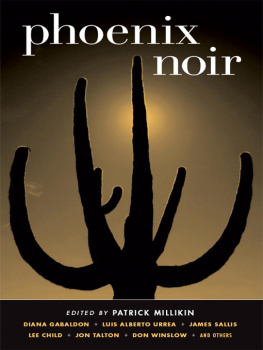Megan Abbott - Phoenix Noir
Here you can read online Megan Abbott - Phoenix Noir full text of the book (entire story) in english for free. Download pdf and epub, get meaning, cover and reviews about this ebook. City: New York, year: 2009, publisher: Akashic Books, genre: Detective and thriller. Description of the work, (preface) as well as reviews are available. Best literature library LitArk.com created for fans of good reading and offers a wide selection of genres:
Romance novel
Science fiction
Adventure
Detective
Science
History
Home and family
Prose
Art
Politics
Computer
Non-fiction
Religion
Business
Children
Humor
Choose a favorite category and find really read worthwhile books. Enjoy immersion in the world of imagination, feel the emotions of the characters or learn something new for yourself, make an fascinating discovery.
- Book:Phoenix Noir
- Author:
- Publisher:Akashic Books
- Genre:
- Year:2009
- City:New York
- ISBN:978-1-933354-85-9
- Rating:3 / 5
- Favourites:Add to favourites
- Your mark:
- 60
- 1
- 2
- 3
- 4
- 5
Phoenix Noir: summary, description and annotation
We offer to read an annotation, description, summary or preface (depends on what the author of the book "Phoenix Noir" wrote himself). If you haven't found the necessary information about the book — write in the comments, we will try to find it.
Phoenix Noir — read online for free the complete book (whole text) full work
Below is the text of the book, divided by pages. System saving the place of the last page read, allows you to conveniently read the book "Phoenix Noir" online for free, without having to search again every time where you left off. Put a bookmark, and you can go to the page where you finished reading at any time.
Font size:
Interval:
Bookmark:
Phoenix Noir

Introduction
Sunshine is the new noir
Phoenix is a young city, even by Arizona standards. The desert metropolis, easily the largest in the Southwest today, wasnt established until 1867, much later than Tucson, Prescott, and other Arizona towns. As the legend goes, fortune-seeker and former Confederate soldier Jack Swilling noticed the ruins of the extensive Hohokam canal system while passing through the Salt River Valley and recognized the economic potential in getting the irrigation ditches up and running again. Centuries earlier, the Hohokam Indians had disappeared, no one really knows why, but the elaborate canal system they left behind provided the foundation upon which a new city would arise. Swilling battled alcoholism and opiate addiction and would later die in Yuma Territorial Prison under suspicion of highway robbery (he was posthumously cleared of the charge).
Although historians debate whether Swilling or fellow pioneer Darrell Duppa first named the town Phoenix, the idea it evoked, a new civilization rising out of the ashes of a previous culture, is revealing. It implied new beginnings, a place where hard-working young families from the East could start over anew. Of course, it wasnt always such a great deal for the nearby Pima and Maricopa Indians.
Early boosters promoted Phoenix as a desert paradise, a lush resort town where health-seekers could enjoy the benefits of clean dry air and warm winter weather. The burgeoning city was quickly so infested with lungers people suffering from tuberculosis and other respiratory ailments that alarmed citizens pressured advertisers to downplay the palliative effects of the environment. Magazine ads from the 40s and 50s show squeaky clean white families enjoying the relaxed pace of desert living: children playing in the sunshine, Dad practicing his golf swing or sipping a highball by the swimming pool.
From the very beginning, Phoenix has always had a darker side. It is a city founded upon shady development deals, good ol boy politics, police corruption, organized crime, and exploitation of natural resources. Close proximity to the Mexican border makes the city a natural destination spot for illegal trafficking of all kinds narcotics, weapons, humans. These days, Americas Toughest Sheriff Joe Arpaio routinely makes headlines for his vigilante-style hunting of illegal aliens and his casual disregard of human rights. And he keeps getting reelected.
Modern-day Phoenix is a textbook case of suburban sprawl gone unchecked. Endless cookie-cutter housing developments, slapped up on the cheap, metastasize outward into the desert, soaking up energy and water that we dont really have. All of that concrete and asphalt traps the heat, raising temperatures to apocalyptic extremes. During the summer, these heat bubbles can be lethal (during one record-breaking month in 2004, fourteen people died from heat exposure, most of them homeless).
The city recently overtook Philadelphia to become the fifth largest city in the country, and the Phoenix metro area now rivals Los Angeles County in size. As in all major cities, the gulf between Phoenixs haves and have-nots continues to widen with the steady decline of the middle class. The affluent northeast valley Scottsdale, Paradise Valley, Carefree has little in common with the sunburned working-class neighborhoods of South Phoenix and much of the west valley, though the developers are trying to change that with gentrification. The population of the city continues to grow and morph, but the legacy of the early ward system, in which much of the political representation resided in the wealthier and whiter first and second wards, lives on to this day.
What does all this mean? Crime, and lots of it. The stories collected in this anthology provide a revealing glimpse of a dark underbelly that the tourists rarely see. Novelist and veteran journalist Jon Talton provides a masterly portrayal of WWII-era Phoenix, back when The Deuce, our old skid row, was in its heyday and the citys corrupt power structure already firmly entrenched. Edgar Award winning author Megan Abbott offers a stylish interpretation of the notorious Bob Crane murder, and brilliantly captures the mellow, sun-baked vibe of Scottsdale during the 1970s. Diana Gabaldon takes the lid off contemporary Scottsdale with a dark and sordid tale combining such disparate elements as squirrel genocide, an illegal orchid smuggling operation, and a murdered Welsh botanist. Investigative reporter Robert Anglen gives us a tour de force of noir depravity about a career loser from East Mesa who is forced to live his miserable life... backwards. Up-and-coming Phoenix scribe Kurt Reichenbaugh delivers the goods with a lean and nasty tale of betrayal along downtowns storied Grand Avenue. Longtime Phoenicians will dig Gary Phillipss contribution, in which L.A. detective Ivan Monk comes to town to investigate some loose ends surrounding the early-70s murder of a local soul singer. The story was inspired by the real-life slaying of Arlester Dyke Christian of funk/R&B group Dyke and the Blazers, whose big hit Funky Broadway few realized was based on the main drag in South Phoenix. And then theres Navajo writer Laura Tohes bad-ass riff on the femme fatale convention when her womanizing protagonist meets his match with a lady who just aint human. This is but a sampling of the dark and diverse tales youll find in Phoenix Noir.
I hope you enjoy this collection. The stories represent our city in all of its contradictory glory, the good and the bad, urban blight and stark natural beauty, everything jumbled together and served up smokin hot, just the way we like it.
Patrick Millikin
Phoenix, AZ
July 2009
Part I
The big heat
Bull
by Jon Talton
Downtown
Union StationI should have been suspicious when Logan said it was a routine job. It wasnt that there were no routine jobs, only that Logan lied routinely. He was a short man with toad lips and a head that was bald and blotched except for a small tuft of dark hair just above his forehead. Always sitting behind his desk made him appear even shorter.
Get out to Twenty-seventh Avenue, know where it is?
He knew I did. I was one of the few people who had actually been born in Phoenix. I tamped out my Lucky Strike in the big ashtray on his desk. Its just fields out there.
Yeah, well, they found a foot at milepost 903.
That sounded pretty routine. People fell under trains and lost things. It had been a lot worse a few years ago, during the Depression, with all the bums and alkie stiffs.
The Golden State will drop you off.
My suspicion made me light up another cigarette. The Golden State Limited is going to slow down to let a bull get off two miles from here?
He pulled the cigar from his mouth. A string of saliva kept it tethered to his fat lips.
Bull. I hate that shit. Youre a special agent for the Southern Pacific Railroad. Have some pride.
I took a drag and drew it down to my shoelaces. I walked to my desk, opened the drawer, and pulled out my Colt .45 automatic, taking my time about slipping on the shoulder holster and replacing the jacket.
Go, you son of a bitch! he hollered, spitting tiny tobacco leaves across the room. At the door, I heard his voice again: And be on good behavior for a change. Got it?
I got it, all right. I took the back stairs out of Union Station, avoiding the mob of young guys in uniform in the waiting room. I crossed the brickwork of the platform and made it to one of the dark green Pullmans on the Golden State just as the whistle screamed highball and the big wheels under the cars started moving. I flashed my badge at the conductor and he let me on, giving me a vinegar look. He didnt want to be slowing down for any damned bull. I let him brush past me and I stayed in the vestibule. It wouldnt be a long ride. The town passed by out the door. Over the red tile roof of the Spanish-style station, the Luhrs Tower marked downtown. If I turned the other way I could have seen the shacks and outhouses south of the tracks. Warehouses and freight cars gradually gave way to open track.
Font size:
Interval:
Bookmark:
Similar books «Phoenix Noir»
Look at similar books to Phoenix Noir. We have selected literature similar in name and meaning in the hope of providing readers with more options to find new, interesting, not yet read works.
Discussion, reviews of the book Phoenix Noir and just readers' own opinions. Leave your comments, write what you think about the work, its meaning or the main characters. Specify what exactly you liked and what you didn't like, and why you think so.


